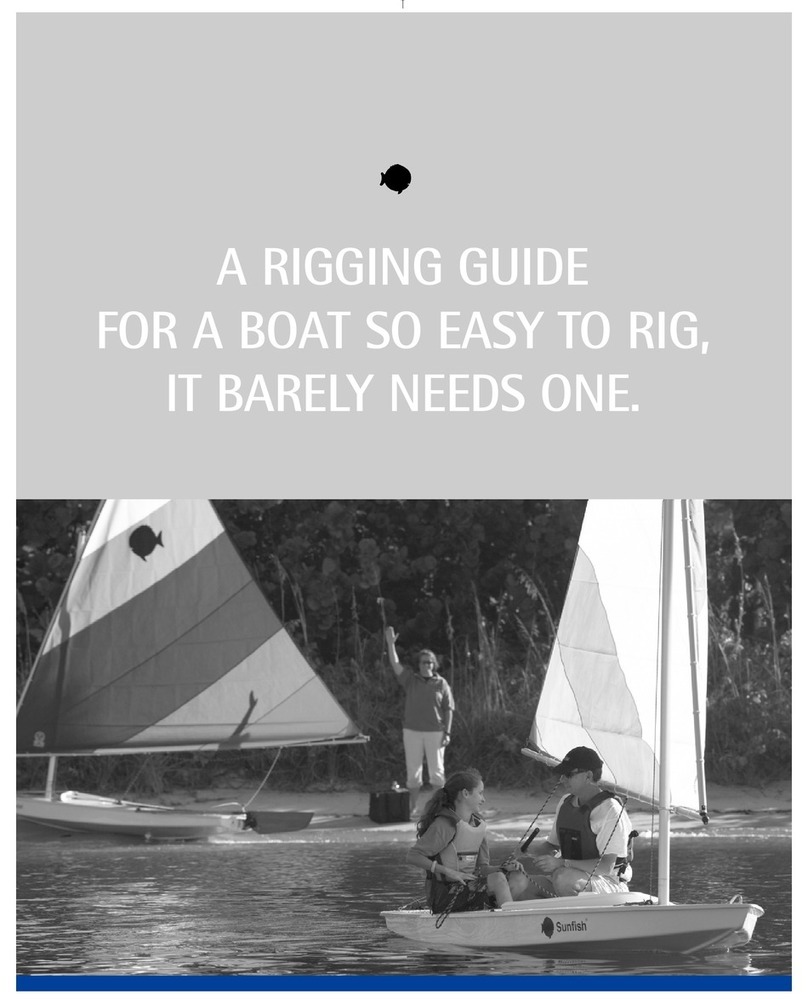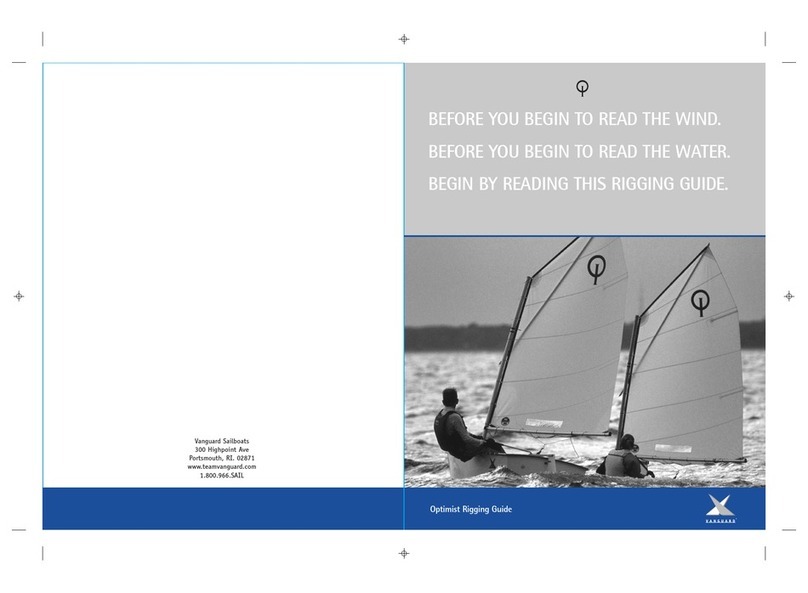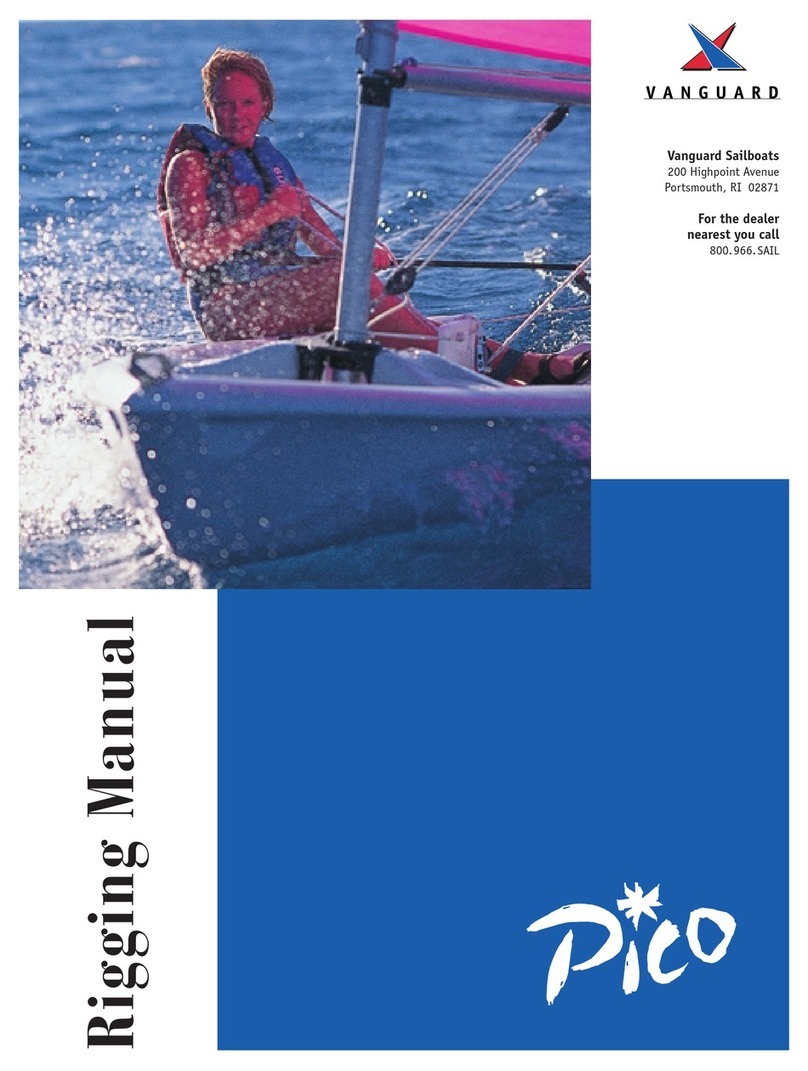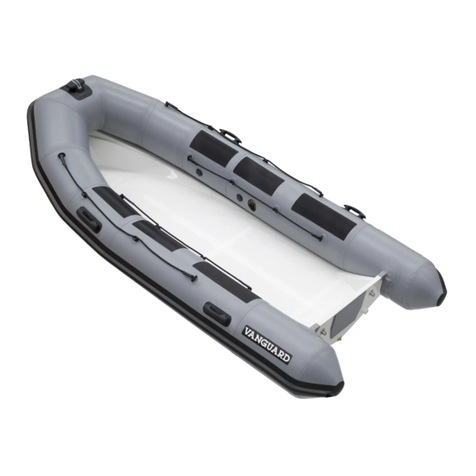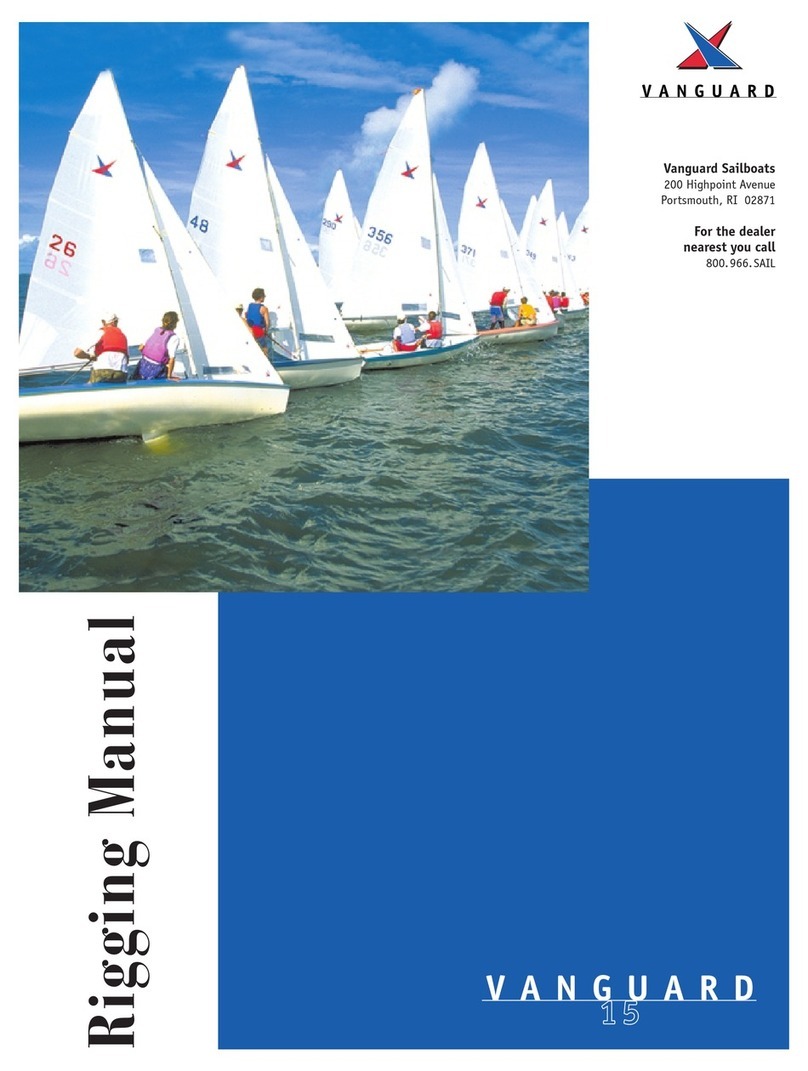3w w w . t e a m v a n g u a r d. c o m
Mast assembly and stepping
Insert the collared end of the mast top section into the bottom
section until the collar is tight against the aluminum. Make sure
the mast step hole and mast butt are perfectly clean; any sand,
dirt etc. in the mast step will grind into the gelcoat and eventual-
ly damage the boat. Locate the halyard and feed one end through
one of the holes in the cap on the top of the mast. Bring both
ends down the mast and tie them off to the cleat. Place the mast
butt against a solid object, lift the top end, and walk toward the
butt, raising it hand over hand until the mast stands vertical.
Rotate the mast until the gooseneck (the metal post about two
feet above the butt) points toward the stern. Keep your hands a
good distance apart while lifting the mast over the hole. Let the
mast slide into the step, but do not drop it as you may damage
the step.
Sail assembly
After checking that there are no sharp objects in the area, lay out
the sail near the boat. Insert the battens into the batten pockets;
the short one goes in the top pocket, and the other two are the
same length. Unzip the sleeve in the forward edge (luff) of the
sail and stack the sail into the boat, with the zipper piled at the
base of the mast. Untie the halyard ends from the cleat and attach
the end that comes off the aft side of the mast to the webbing
strap on the head of the sail. Wrap the sail sleeve around the
mast (with the free end of the halyard inside) above the goose-
neck and engage about three inches of zipper to hold it in place.
Pull on the halyard with your left hand while zipping the sleeve
closed with your right, until the sail is all the way up. Cleat off the
halyard securely.
Boom
Insert the gooseneck pin into the hole in the forward end of the
boom and walk aft, exerting forward pressure to keep it in place
until you attach the outhaul.
Vang: Attach the block with the cleat to the metal fitting on the
mast just above the deck. Attach the shackle to the metal strap
on the underside of the boom, and snug the line.
Outhaul: Tie the bitter end of the outhaul to the plastic fairlead
on the outboard end of the boom. Thread the outhaul through the
clew grommet in the sail, through the fairlead, and lead it forward
to the cleat on the boom. Tighten it enough so that it will keep
the boom on the gooseneck pin.
Clew Tiedown: Wrap the clew tiedown line twice around the
boom and the clew grommet (inside the outhaul), and secure it to
itself. It should hold the clew tight against the boom but still allow
it to slide forward and aft as you adjust the outhaul.
Mast Assembly
Mainsail
Assembled and Mounted
Clew and Outhaul
Assembled and Mounted






